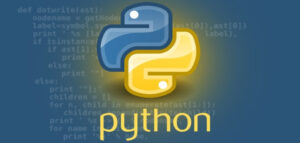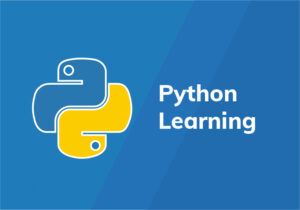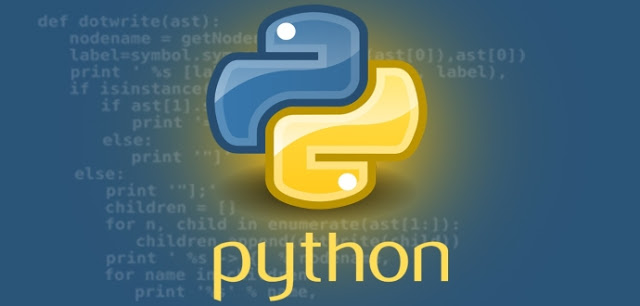QuickSilver Python
Blog
QuickSilver Posts Category List

Demystifying Python’s ‘pass’ Statement
Demystifying Python’s ‘pass’ Statement: Understanding Its Role

Python Identity Operators: Unveiling the Power of ‘Is’ and ‘Is Not’
Python Identity Operators: Unveiling the Power of ‘Is’ and ‘Is Not’ Discover the hidden might of ‘is’ and ‘is not’—unleash their potential to compare objects with precision.

Exploring Python’s Membership Operators
Exploring Python’s Membership Operators: A Journey into Inclusion

Python Bitwise Operators: A Comprehensive Guide
Mastering Python Bitwise Operators: Your Ultimate Guide

Converting Images with PIL and Tkinter
Converting Images with PIL and Tkinter: The Perfect Duo for Easy Image Manipulation.

Mastering Python’s Logical Ops
Mastering Python’s Logical Ops: A Guide to Efficient Coding

Mastering Python’s Assign Operators
Mastering Python’s Assign Operators: A Guide to Efficient Code

Python Comparison: Relational Operators Explained
Python Comparison: Relational Operators Explained Are you ready to dive into the world of Python and explore the power of relational operators? These operators allow you to compare values and make logical decisions in your code. Let’s unravel the secrets behind these operators and understand how they work in Python. So, gear up and let’s embark on this informative journey together!
Mastering Python Arithmetic: Essential Operators Explained
Mastering Python Arithmetic: Essential Operators Explained Python, a versatile programming language, offers a wide range of arithmetic operators to manipulate numbers efficiently. Understanding these operators is essential for any Python developer. Let’s delve into the world of Python arithmetic and explore the key operators that will enhance your programming skills.
Python Type Conversion: Mastering Data Manipulation
Python Type Conversion: Mastering Data Manipulation Type conversion is a crucial skill in Python programming. It allows us to transform data from one type to another, facilitating efficient data manipulation. Whether you’re a beginner or an experienced programmer, understanding how to convert data types is essential for smooth coding. This article will guide you through the process of mastering type conversion in Python, providing you with valuable insights and practical examples. Get ready to unlock a world of possibilities with Python type conversion!

Python Data Types: int, float, string, bool
Understanding Python Data Types: int, float, string, bool

Understanding Python Variables: Assignments Demystified
Python Variables: Assignments Demystified Python variables are essential elements in any programming language, serving as containers for storing data. Understanding how variables work is crucial for mastering Python programming. In this article, we will demystify the concept of variable assignments, enabling you to manipulate data effortlessly. Let’s dive into the world of Python variables and unlock the secrets behind their assignments.

Unveiling the Power of Keywords & Identifiers
Unveiling the Power of Keywords & Identifiers: Unlocking the Path to Online Success

Python’s ‘Hello World’ Explained
Python’s ‘Hello World’ Explained: The Simple Introduction to Python Programming

Unraveling Python Interpreters: A Narration
Unraveling Python Interpreters: A Narration Python, the versatile and powerful programming language, owes much of its success to its robust interpreters. These interpreters play a pivotal role in executing Python code and converting it into machine-readable instructions. Join us on an enchanting journey as we delve into the inner workings of Python interpreters, revealing the magic behind this programming language’s execution process. At the heart of Python lies the CPython interpreter, the most widely used implementation. Its name stems from the fact that it is written in C, making it highly efficient and compatible with various platforms. CPython follows a step-by-step process to transform your Python code into executable actions. The first step involves lexing, where the interpreter analyzes the code and breaks it down into individual tokens. Think of this as a language translator, parsing your words and understanding their meanings. Each token, such as keywords, operators, and variables, is assigned a specific meaning by the interpreter. Next comes parsing, where the interpreter examines the tokens and their relationships to form a coherent structure, known as the Abstract Syntax Tree (AST). This tree serves as a blueprint for executing the code, ensuring that each operation is carried out in the correct sequence. Once the AST is constructed, the interpreter

Python’s Versatility: Unveiling its Wide-Ranging Applications
Python’s Versatility: Unveiling its Wide-Ranging Applications Python, a high-level programming language, has gained immense popularity due to its versatility and wide-ranging applications. From web development and data analysis to artificial intelligence and game development, Python has become the go-to choice for developers worldwide. One of the key reasons behind Python’s versatility is its simplicity and readability. Its syntax allows developers to write code in a concise and elegant manner, making it easier to understand and maintain. This ease of use has made Python a favorite among beginners and experienced programmers alike. Python’s ability to integrate with other languages and platforms further contributes to its versatility. It seamlessly integrates with popular languages like C, C++, and Java, enabling developers to leverage existing codebases and libraries. Additionally, Python’s compatibility with major operating systems such as Windows, macOS, and Linux make it a versatile choice for developing cross-platform applications. Web development is one area where Python truly shines. Its robust frameworks, such as Django and Flask, provide developers with powerful tools for building scalable and secure web applications. Python’s simplicity and extensive libraries make it ideal for prototyping, allowing developers to quickly create functional web prototypes. Data analysis and scientific computing are also among Python’s strengths. Libraries like NumPy, Pandas, and

Python’s Power-Packed Features
Python’s Power-Packed Features: Unleashing the Potential of this Dynamic Language Python, a versatile and dynamic programming language, has taken the tech world by storm. With its power-packed features, Python has become a top choice for developers and data scientists alike. Let’s explore some of the key features that make Python an indispensable tool in today’s digital landscape. First and foremost, Python boasts a clean and readable syntax that makes coding a breeze. Unlike other languages, Python emphasizes simplicity, allowing developers to express their ideas without getting lost in complex syntax. This readability fosters collaboration and enables faster development cycles. In addition to its simplicity, Python offers a vast array of powerful libraries and frameworks. These pre-built tools allow developers to quickly and efficiently tackle a wide range of tasks, from web development to data analysis. Need to create a web application? Django and Flask are there to help. Analyzing data? Pandas and NumPy have got your back. Python’s extensive library ecosystem empowers developers to build robust and scalable solutions in record time. Furthermore, Python is renowned for its cross-platform compatibility. Whether you’re working on Windows, macOS, or Linux, Python ensures that your code runs seamlessly across different operating systems. This versatility eliminates the headache of platform-specific bugs, allowing
- Operators
- By admin
- December 20, 2023
Featured
- Operators
- By admin
- December 20, 2023
Join our mailing list
Quicksilver Python
Python 3.12
- Operators
- By admin
- December 20, 2023
Latest News & Developments

Unveiling the Power of Keywords & Identifiers
Unveiling the Power of Keywords & Identifiers: Unlocking the Path to Online Success

Python’s ‘Hello World’ Explained
Python’s ‘Hello World’ Explained: The Simple Introduction to Python Programming

Unraveling Python Interpreters: A Narration
Unraveling Python Interpreters: A Narration Python, the versatile and powerful programming language, owes much of its success to its robust interpreters. These interpreters play a pivotal role in executing Python code and converting it into machine-readable instructions. Join us on an enchanting journey as we delve into the inner workings of Python interpreters, revealing the magic behind this programming language’s execution process. At the heart of Python lies the CPython interpreter, the most widely used implementation. Its name stems from the fact that it is written in C, making it highly efficient and compatible with various platforms. CPython follows a step-by-step process to transform your Python code into executable actions. The first step involves lexing, where the interpreter analyzes the code and breaks it down into individual tokens. Think of this as a language translator, parsing your words and understanding their meanings. Each token, such as keywords, operators, and variables, is assigned a specific meaning by the interpreter. Next comes parsing, where the interpreter examines the tokens and their relationships to form a coherent structure, known as the Abstract Syntax Tree (AST). This tree serves as a blueprint for executing the code, ensuring that each operation is carried out in the correct sequence. Once the AST is constructed, the interpreter


